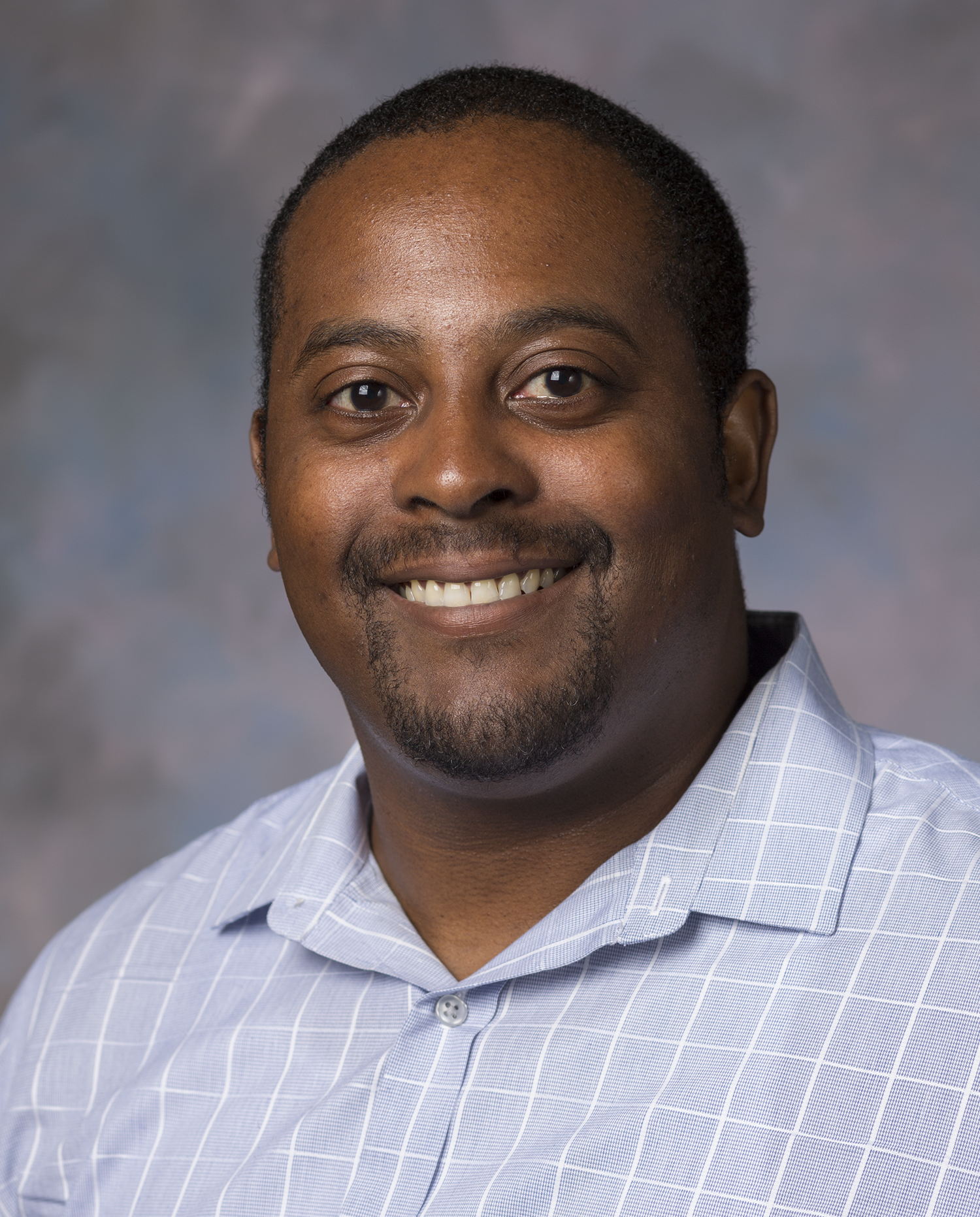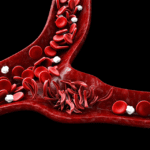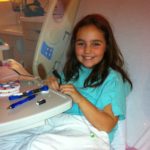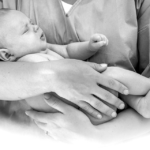Featured Researcher — Rodney Britt, PhD
Featured Researcher — Rodney Britt, PhD https://pediatricsnationwide.org/wp-content/themes/corpus/images/empty/thumbnail.jpg 150 150 Natalie Wilson Natalie Wilson https://pediatricsnationwide.org/wp-content/uploads/2021/06/Natalieheadshot3-2.png- October 06, 2021
- Natalie Wilson
Rodney D. Britt Jr., PhD, is a principal investigator in the Center for Perinatal Research at the Abigail Wexner Research Institute at Nationwide Children’s Hospital and an assistant professor of Pediatrics at The Ohio State University.
Dr. Britt earned his bachelor’s degree in Chemistry from North Carolina A&T State University and his doctorate degree in Biomedical Sciences from The Ohio State University. He completed his postdoctoral training at Mayo Clinic in Rochester, MN. His research training centered on understanding mechanisms in neonatal and pediatric airway diseases, most notably asthma and bronchopulmonary dysplasia.
Children with airway disease experience significant airflow obstruction, airway hyperresponsiveness, and chronic inflammation. Furthermore, development of airway disease as a child increases the risk having a chronic airway as an adult.
Dr. Britt’s lab aims to advance understanding of mechanisms related to neonatal and pediatric airway disease, with emphasis on how airway inflammation affects airway structure and function in asthma.
Although effective in suppressing inflammation, corticosteroids are largely ineffective in preventing the pathological and functional changes in airway disease.

Consequentially, patients insensitive to corticosteroids have difficulty managing symptoms and experience greater disease burden. Dr. Britt’s lab studies how airway inflammation affects corticosteroid sensitivity in asthma, while working to develop novel strategies to improve corticosteroid sensitivity and alleviate asthma.
Read on to learn more about Dr. Britt and his research journey.
Why did you pursue a career in research?
Growing up, my mom was a nurse, but I wasn’t too interested in science. I started out in college studying graphic design and communications, but I knew I had the wrong major. I remember watching someone using Photoshop and knew I couldn’t see myself doing that work. I happened to take a physics class and liked it, so I decided I wanted to try science again. I ended up majoring in chemistry over physics, though, because I wasn’t sure what I wanted to do and thought chemistry would be a good general direction in terms of finding a job.
I was looking for what to do next and started thinking of going to medical school — I didn’t know about doctorate research yet — because I found biology and pharmacology interesting, even though I wasn’t really interested in human disease at that time. I joined a six-week med school prep program in the summer, and that program and the people I met there helped me begin to formulate what I was going to do next.
My cousin, who was one of my roommates, was pursuing a doctorate degree in mechanical engineering, so I started thinking about a doctorate degree. Then, a year after I met him at the prep program, a friend ended up going to the The Ohio State Biochemistry Program while I was still an undergrad. I decided to apply for the Biomedical Sciences Graduate Program at OSU to get my doctorate degree.
Because I studied chemistry in undergrad, there was definitely a steep learning curve in my first year. But there are also some things you learn in chemistry — a lot of problem-solving based skills — that can really help you. You aren’t pigeonholed by your major. Now I see all of the diverse backgrounds of people in medicine, and it’s one of the things I really love about it.
Fun Facts About Dr. Britt
What fictional character would you most like to meet and why?
Lestat from Interview with the Vampire.
What do you usually eat for breakfast?
It’s different every day, but my favorites are eggs and hash browns, sausage or bacon, and sometime grits.
What’s your favorite food?
Chicken wings and tater tots.
Favorite band/genre/artist?
I’m a big hip hop head — some of my favorite artists are Wu-Tang Clan, Kendrick Lamar and J. Cole.
Favorite way to relax?
I like watching TV and sports, mostly football and basketball.
What was your path to your current role?
I took my path one step at a time, and I took advantage of every opportunity in every step. I just went forward in the direction life took me.
Looking back, there’s definitely a lot of serendipity in terms of the interactions I had with the people around me that led me to where I am.
My grad program led me to work with Lynette Rogers, PhD, in her lab. That’s how I got into neonatal and pediatric lung disease — I got really interested in understanding the lung. But if she studied cancer, for example, I’d probably study cancer. The training that I got, and the people that I met and worked with throughout my career had such a big influence on my path.
Then I went to the Mayo Clinic for five years to conduct my postdoctoral research, which is what led me to an interest in asthma. When I got an opportunity to come back to Nationwide Children’s as a principal investigator, it sounded like a great way to continue my research interests. I like the clinical research environment here — throughout grad school, I attended seminars with Neonatology and met physician-scientists in our research group. And doing research at a top children’s hospital creates unique opportunities in basic and translational research. Plus, with the proximity of Nationwide Children’s to The Ohio State University Medical Center, you get the best of both worlds to tackle problems here.
But it was the mentorship from Dr. Rogers and the training environment in her lab I experienced as a grad student that really helped me understand the outstanding research environment we have here. Conducting research in the Rogers Lab is what’s prepared me to apply to grants and continue to be successful. Now, I’ve been National Institutes of Health-funded since grad school. I’ve been able to receive every grant I’ve applied to, and that tells me I’m on the right path. By the time I graduated grad school, I could see this path starting to take shape, but being able to get grant funding reinforced that I should stay on this academic career track.
Life can tell you things. If you can figure out how to be successful, how to do the research, how to keep learning, you’ve found a path to keep following. And when I get a grant, that makes me more competitive for the next one. My K99/R00 grant was really instrumental in me gaining a tenure track position. If you can get opportunities like that, you should take full advantage.
Today, the mentorship relationship I have with Dr. Rogers is still there. Other mentors, like my mentor at the Mayo Clinic, Y.S. Prakash, MD, PhD, have also been instrumental to my research and professional growth. I’ve gotten fortunate to have had really great collaborators and mentors over the years. And I now have my own trainees I’m responsible for, and the experience I’ve had informs how I mentor them.
What is your favorite part of your job?
Even though it can sometimes take two-to-three years to get a paper out or get a grant award, I like the process of developing a hypothesis, testing it and seeing it through. I also like being able to work with other people to solve problems — both people in my lab and collaborators.
How does your research serve our patients and our community?
We aim to advance knowledge of asthma and pediatric lung diseases and infections, which are some of the most common reasons kids are hospitalized. We’ve been doing a lot of basic research up until now, and the impacts of that research may seem more indirect, but improving our understanding of lung disease will help us develop treatments. Our primary goal in our lab is to develop knowledge and make a research platform that can facilitate that. There’s a lot we do know about prematurity and its long-term consequences in the area of lung disease, but as we learn more, we also know it’s an area that could use more research.
In children with severe asthma, effectively alleviating their symptoms and limiting the progression of their disease remains difficult, which can negatively impact their development and health long term. Inhaled corticosteroids are a key treatment for managing asthmatic symptoms and disease progression; however, children with severe asthma develop insensitivity or resistance to corticosteroid treatments, leading to the need for systemic use at high doses and making their disease difficult to manage. The goal of Dr. Britt’s NIH-funded project is to understand how inflammation promotes this corticosteroid resistance and assess the potential for therapeutic strategies to improve corticosteroid sensitivity. Dr. Britt and his team use novel mouse and human models of corticosteroid resistance to examine airway inflammation, hyperresponsiveness (AHR) and remodeling in airway smooth muscle, a key structural cell that regulates airway function and tone, with the goal of improving corticosteroid sensitivity in ASM, thereby improving airway function. His lab’s novel research will expand the current understanding of how ASM develops corticosteroid resistance and may suggest how to prevent and mediate corticosteroid resistance in severe pediatric asthma.
About the author
Natalie is a passionate and enthusiastic writer working to highlight the groundbreaking research of the incredible faculty and staff across Nationwide Children's Hospital and the Abigail Wexner Research Institute. Her work at Nationwide Children's marries her past interests and experiences with her passion for helping children thrive and a long-held scientific curiosity that dates back to competing in the Jefferson Lab Science Bowl in middle school. Natalie holds a bachelor’s degree in sociology from Wake Forest University, as well as minors in women's, gender & sexuality studies and interdisciplinary writing. As an undergraduate student, Natalie studied writing and journalism, engaged with anthropological and sociological research with a focus on race and ethnic relations, served as executive editor for the student newspaper, the Old Gold & Black, and gained marketing experience as an intern for a nonprofit entrepreneurial incubator, Winston Starts, as well as by working for Wake Forest University School of Law Office of Communication and Public Relations and its Innocence and Justice Clinic.
-
Natalie Wilsonhttps://pediatricsnationwide.org/author/natalie-wilson/
-
Natalie Wilsonhttps://pediatricsnationwide.org/author/natalie-wilson/
-
Natalie Wilsonhttps://pediatricsnationwide.org/author/natalie-wilson/
-
Natalie Wilsonhttps://pediatricsnationwide.org/author/natalie-wilson/
- Posted In:
- Featured Researchers










